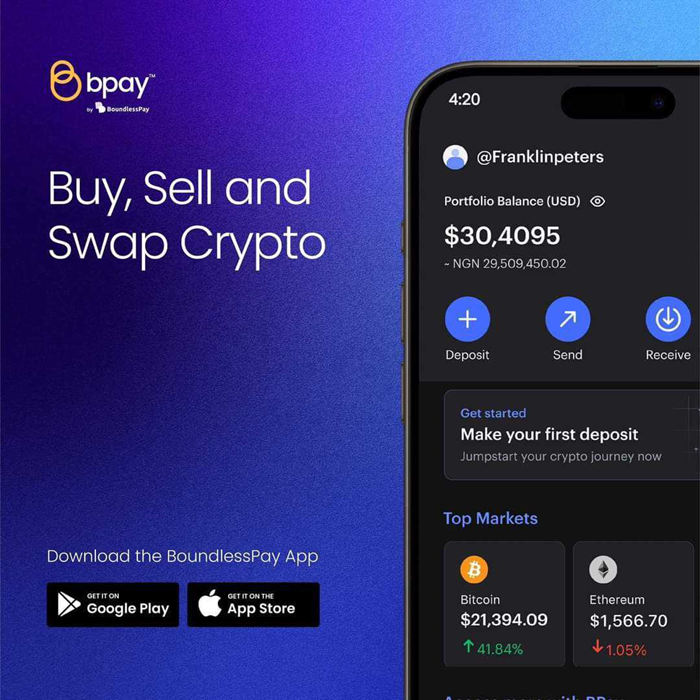Crypto investments have evolved from niche markets to becoming an integral part of modern finance. Yet, many investors—especially those new to the space—are often overwhelmed by the sheer number of available cryptoassets and the volatility of the crypto market. Thus, building a diversified crypto portfolio is essential for anyone looking to manage the highly volatile world of cryptocurrencies.
A well-diversified crypto portfolio can help an investor balance risk and return by spreading investments across different cryptoasset classes, ensuring that losses in one project can be offset by gains in another. Notably, a crypto portfolio refers to the collection of different cryptocurrencies an individual holds as part of their investment strategy.
This article serves as a comprehensive guide for anyone seeking to build a profitable and diversified crypto portfolio. We explore why diversification is important and which cryptoasset classes to consider adding to your portfolio.
Why diversification matters in crypto investing
Diversification is an investment strategy that involves spreading assets across various types of assets to reduce risk. In the conventional sense, it entails investing in different assets, such as stocks, bonds, real estate, and/or cryptocurrencies. By doing so, investors minimize the impact of poor performance from any single investment.
When it comes to investing in cryptoassets, diversification is not just a buzzword—it’s a fundamental principle for managing risk. Crypto markets are known for their high volatility, with asset prices often experiencing dramatic fluctuations within short periods. While this volatility can present opportunities for high returns, it also exposes investors to significant risk. However, with proper portfolio diversification which entails spreading your investment across different types of cryptoassets, one can mitigate these risks.
A diversified crypto portfolio doesn’t just reduce exposure to any single cryptoasset but allows investors to capitalize on different cryptoasset classes. Beyond holding different coins or tokens, the concept involves selecting cryptoassets that have varying degrees of risk and return potential.
For instance, you might invest in a mix of large-cap coins like bitcoin (BTC) and Ether (ETH), which are considered more stable, along with mid-cap and low-cap altcoins that have higher growth potential but come with increased risk. This approach ensures that while you may benefit from the growth of emerging projects, you are also protected by the relative stability of established cryptocurrencies.
In other words, diversification can help in capturing various sectors of the crypto market. While many investors are familiar with currencies like BTC and ETH, the broader blockchain ecosystem includes decentralized finance (DeFi) platforms, stablecoins, non-fungible tokens (NFTs), bitcoin ordinals/inscriptions, and even memecoins.
These segments offer unique opportunities that can provide alternative revenue streams. By investing across board, you stand a better chance of benefiting from the overall growth of the crypto and blockchain industry, even if one specific sector underperforms.
Read also: Ethereum and Altcoins: What are the Opportunities in the Altcoin Market?
Building a diversified crypto portfolio
Below are the primary categories of cryptoassets that should be considered when building a balanced crypto portfolio:
- A blue-chip or large-cap cryptocurrencies
Blue chip or large-cap cryptoassets are digital currencies with a high market capitalization, typically exceeding $10 billion. They are considered well-established and less volatile compared to low-cap counterparts. Examples include BTC, ETH, BNB, and SOL, which dominate the crypto market due to their widespread adoption and liquidity.
- Mid-cap and low-cap cryptoassets
Mid-cap cryptocurrencies have a market capitalization between $1 billion and $10 billion. These projects are more established than low-cap coins, have a stronger development community, and are less risky compared to low-cap cryptocurrencies. Mid-cap cryptos often have active networks, a growing user base, and reasonable liquidity on major exchanges, making them attractive for investors seeking growth with some degree of safety.
On the other hand, low-cap cryptocurrencies have a market cap below $1 billion. These are often newer, more speculative projects with significant growth potential, but they also come with higher risk. Low-cap cryptoassets may have limited liquidity, less trading volume, and can be more volatile due to lower market demand. In addition, these coins can be more susceptible to price manipulation.
Read also: Why is liquidity important to your crypto investment?
- DeFi tokens
DeFi is disrupting the financial sector by enabling users to trade, lend, borrow, and earn interest without intermediaries. Accordingly, DeFi tokens refer to the native tokens of the various projects in the DeFi ecosystem—be it layer one or layer two blockchain projects. They can also be defined as cryptocurrencies that are integral to DeFi platforms.
DeFi tokens are often used for governance, staking, liquidity provision, or accessing specific features of DeFi protocols. Some common uses and types of Defi tokens include governance tokens, utility tokens, liquidity pool (LP) tokens, and yield farming tokens. Adding DeFi tokens to your portfolio can be a smart move if you believe in the future of decentralized finance and want to benefit from its growth.
Read also: What is Decentralized Finance (DeFi) and How To Benefit from Its Ecosystem?
- Stablecoins
Stablecoins are a type of cryptocurrency designed to maintain a stable value by being pegged to a reserve asset such as a fiat currency (e.g., the US dollar), commodities (e.g., gold) or another cryptocurrency. They offer stability and can be used as a hedge against the wild price swings of conventional cryptoassets.
While stablecoins may not provide high returns, they can help balance risk during market downturns or reduce portfolio value decline. Some leading stablecoins by market cap are Tether (USDT) and USD Coin (USDC).
Read also: Introduction to Stablecoins: USDT, USDC, and BUSD
- NFTs and metaverse tokens
Non-fungible tokens (NFTs) are unique digital assets stored on the blockchain, representing ownership of digital items like art, collectibles, and virtual real estate. Each NFT is distinct, cannot be replicated, and often grants its owner exclusive rights over the digital content it represents.
Metaverse tokens are digital currencies used within virtual worlds, or metaverses, enabling users to buy virtual land, items, and services. These tokens fuel the economy of the metaverse and can also be traded or staked.
Both NFTs and metaverse projects have gained massive attention in recent years, offering new avenues for profit. These tokens provide exposure to the rapidly growing digital real estate and virtual experience markets. They offer high risk but also high reward, making them suitable for those looking to diversify into emerging sectors.
Read also: Understanding the Metaverse and Top Metaverse Coins in the Crypto Market
- GameFi or play-to-earn (P2E) tokens
GameFi (a blend of “game” and “finance”) tokens represent a sector where blockchain technology and gaming merge to offer players financial incentives through gameplay. In GameFi or play-to-earn (P2E) ecosystems, players can earn, trade, and stake tokens by completing tasks, winning battles, or leveling up characters within blockchain-based games.
These tokens often serve as in-game currency but have real-world value since they are tradable on crypto exchanges. Given their growing dominance and relevance in the industry, investors can consider adding them to their crypto portfolios.
Read also: Introduction to Play-to-Earn Games
- Memecoins or meme tokens
As the name implies, memecoins are a type of cryptocurrency that originate from internet memes, jokes, or cultural trends. Notably, they offer no inherent utility or technological innovation like other established cryptocurrencies such as BTC and ETH.
Memecoins are usually highly speculative and can experience significant price volatility driven largely by social media hype, celebrity endorsements, or online communities. While they may not be an investing option for some crypto investors, several market participants consider it wise to allocate a portion of their capital to some notable or widely-adopted memecoins. However, it is necessary to apply caution when dealing with memecoins.
Read also: Understanding the Pros and Cons of Memecoins as an Investor
Conclusion
While building a diversified crypto portfolio is crucial for investors, there are no general rules. The choice of which cryptoasset to invest in is a matter of preference, but should be considered based on fundamental and technical analyses.
Nonetheless, by balancing between cryptoasset categories, including gamefi tokens, metaverse tokens, DeFi tokens, NFTs, stablecoins, large-cap, mid-cap, and low-cap cryptocurrencies investors can create a portfolio that leverages both the stability of established cryptoassets and the potential growth of newer, more innovative projects.
What is Tokenomics and Why Does It Matter to Crypto Investors?
This Crypto Companion resource is supported by Boundlesspay:

Ndianabasi Tom A crypto journalist and content writer who has been talking about cryptocurrency and blockchain technology since 2018, Ndianabasi is a Writer at Crypto Asset Buyer (CAB).
Discover more from Crypto Asset Buyer
Subscribe to get the latest posts sent to your email.




